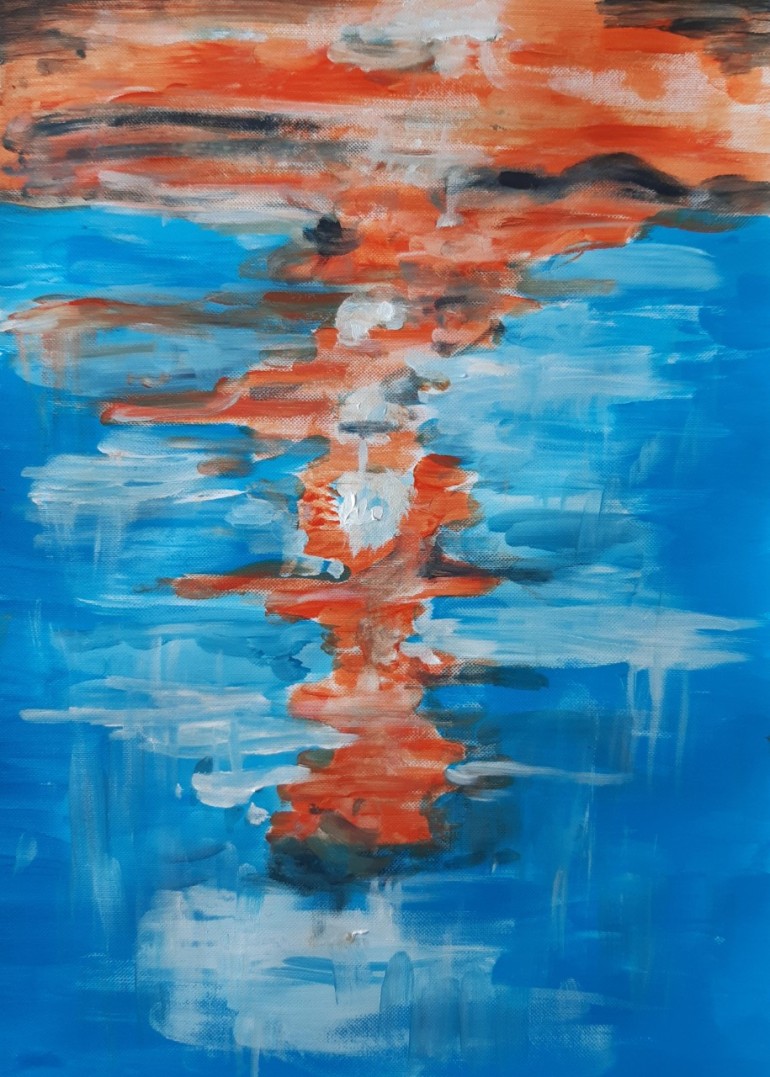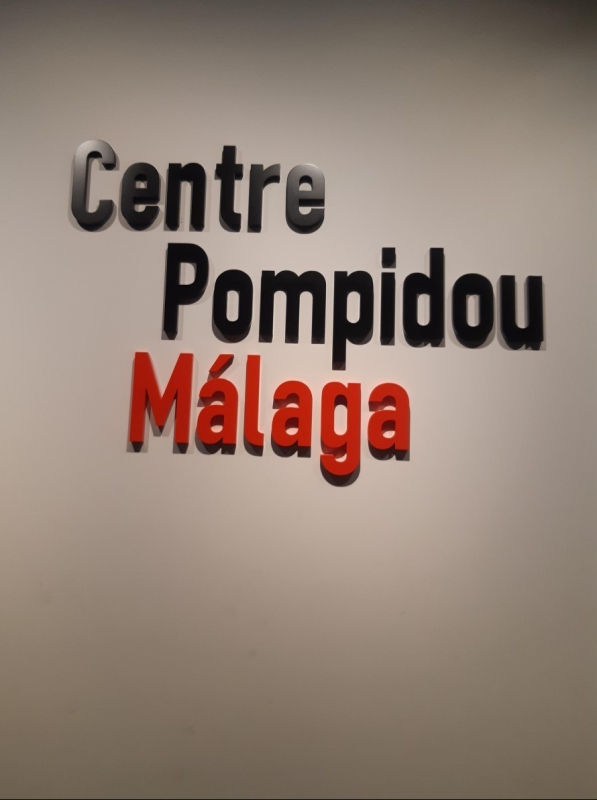A busy August with lots of visitors, but I managed to visit the Pompidou whilst in Malaga.
They have an exhibition by American artist Jim Dine at the moment and I was pleased to find a few works where he had used clothing, as per the previous research module.
All photographs my own.
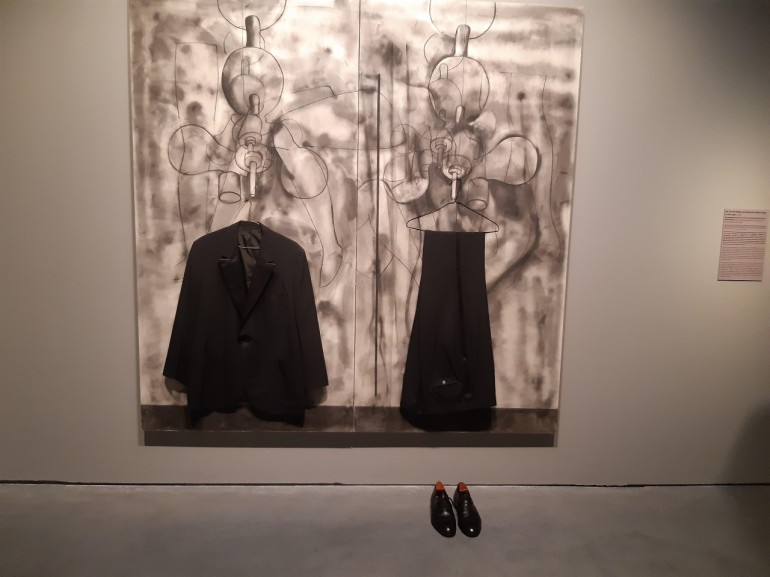
‘My tuxedo makes an impressive blunt edge to the light’, 1965
The jacket and the trousers seem at first glance to be part of the painting, but the shoes on the floor make you realise this is not the case. The painting background appears to be of a ceiling fan and light, but I’m not sure why they would be hanging from there. There seem to be a heaviness to the garments, the metal coat hangers don’t hold the weight well, and to me, a sadness somehow in this work. It is like a self portrait but with the artist absent. This absence seem to be a recurring motif as I moved on to the painting of the bathrobe. What is he saying? Maybe that sometimes he has to dress up and make an effort, but perhaps that is not his real self.
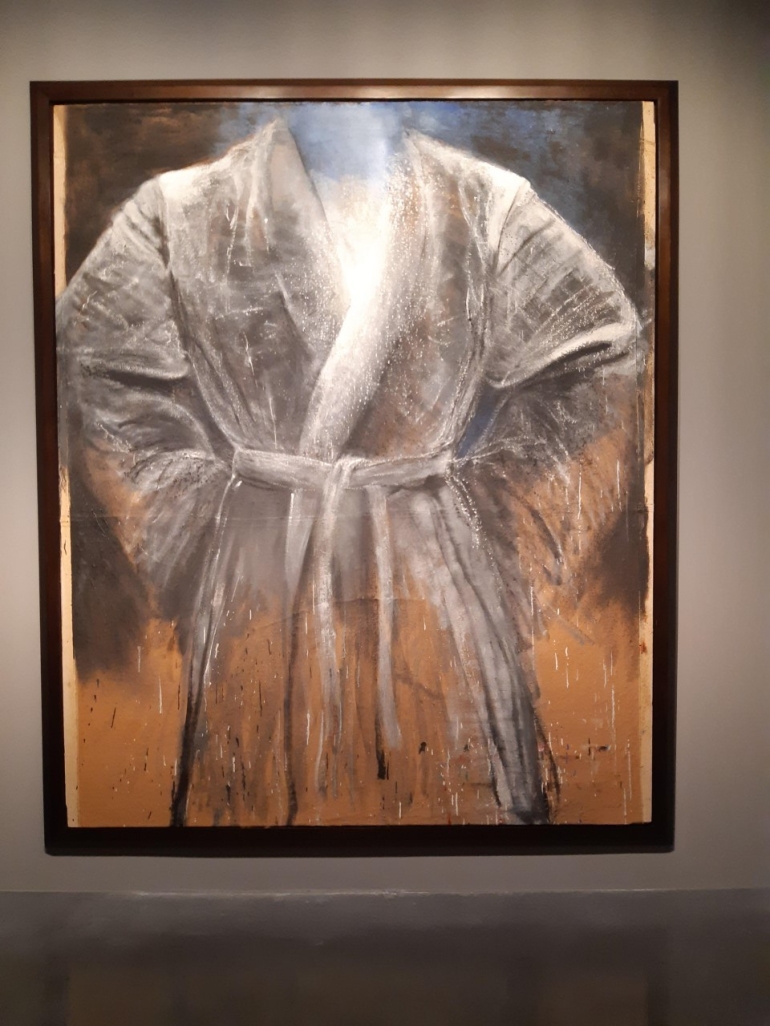
This bathrobe has been a constant presence in a lot of Dine’s work. Here there is also an absence of self. It is beautifully described and is quite a commanding presence; I was instinctively drawn towards it in the gallery. It is oil on canvas, 230 x 189cm. Light seems to glow from the heart of it. The work is mostly black and white with golden tones. It is as if over an invisible body. In a previous module I had worked with the idea of my dresses going out without me and had drawn them in this way without the body present, and this reminded me of this work.
In the rest of the gallery, I was delighted to find this canvas by Peter Doig. I have researched his work before and like his style very much. There is nothing like finding yourself in front of a painting you have researched and loved.
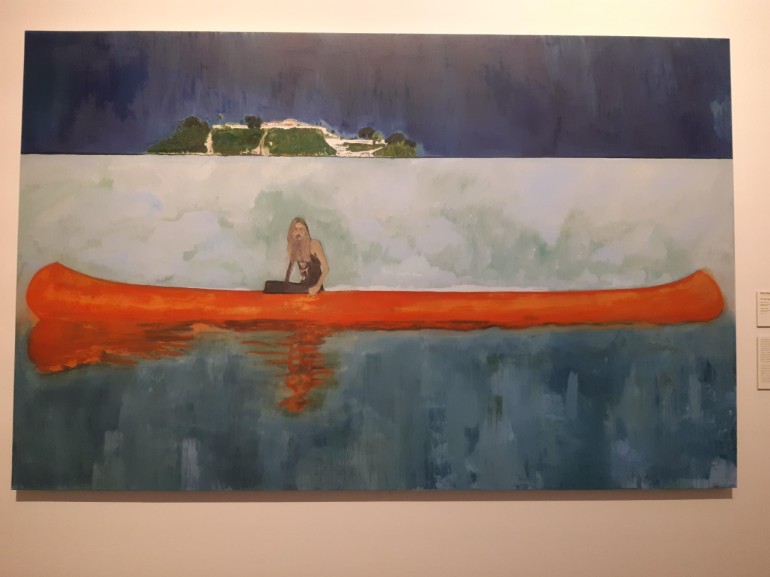
Oil on canvas, 229 x 359cm. It has Doig’s recurring motif of the canoe. Always full of things from his life, the island a photograph of Trinidad, and also inspiration is from a 1970s rock band album cover. ;…Peter Doig goes even further by transposing an album cover from 70s rock group The Allman Brothers Band onto his painting within an atmosphere close to the realm of Edward Munch. He thus puts the bassist Berry Oakley into an immense canoe.’ ‘…photograph of an insular hospital located in Trinidad where the artist spent his childhood allows him to evoke the symbolism of The Island of the Dead by Swiss painter Arnold Böcklin.’ source both quotes: http://www.icon-icon.com/en/100-years-peter-doigs-iconic-painting/
What appeals to me is the sectioning of the painting by the canoe and the horizon, which almost seems to show the curve of the Earth, and also the water seems to have a deep and lonely depth to it, with the way his brushstokes go downwards in front of the canoe. I loved the reflection part of the canoe in the water and I thought it would make a beautiful abstract by itself. I might have to paint an homage to it.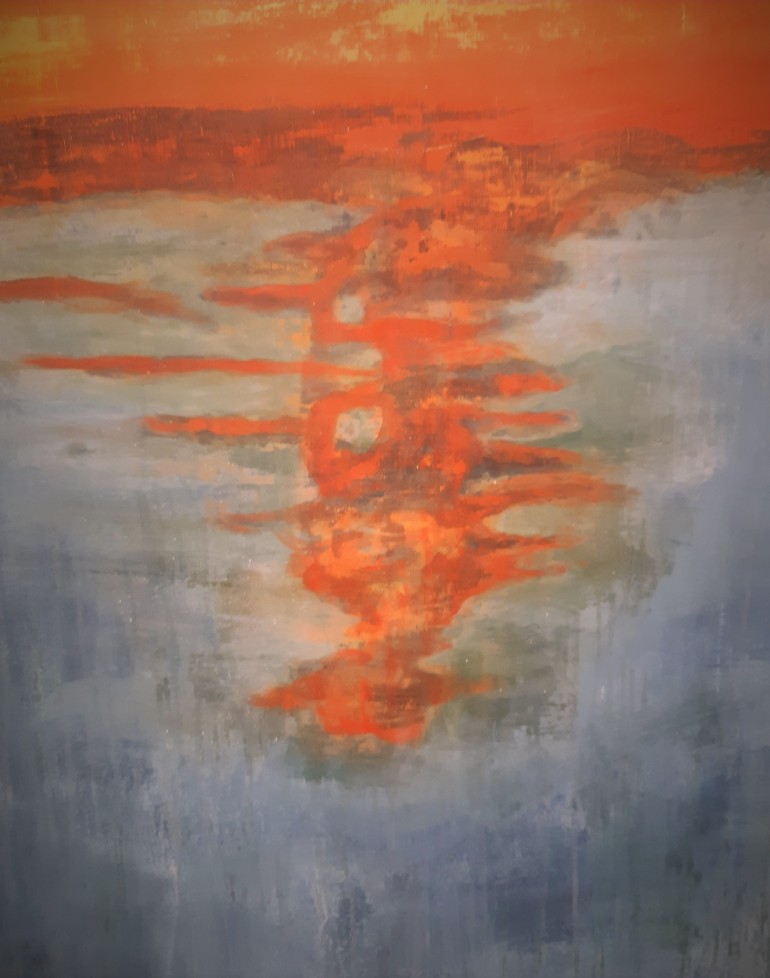
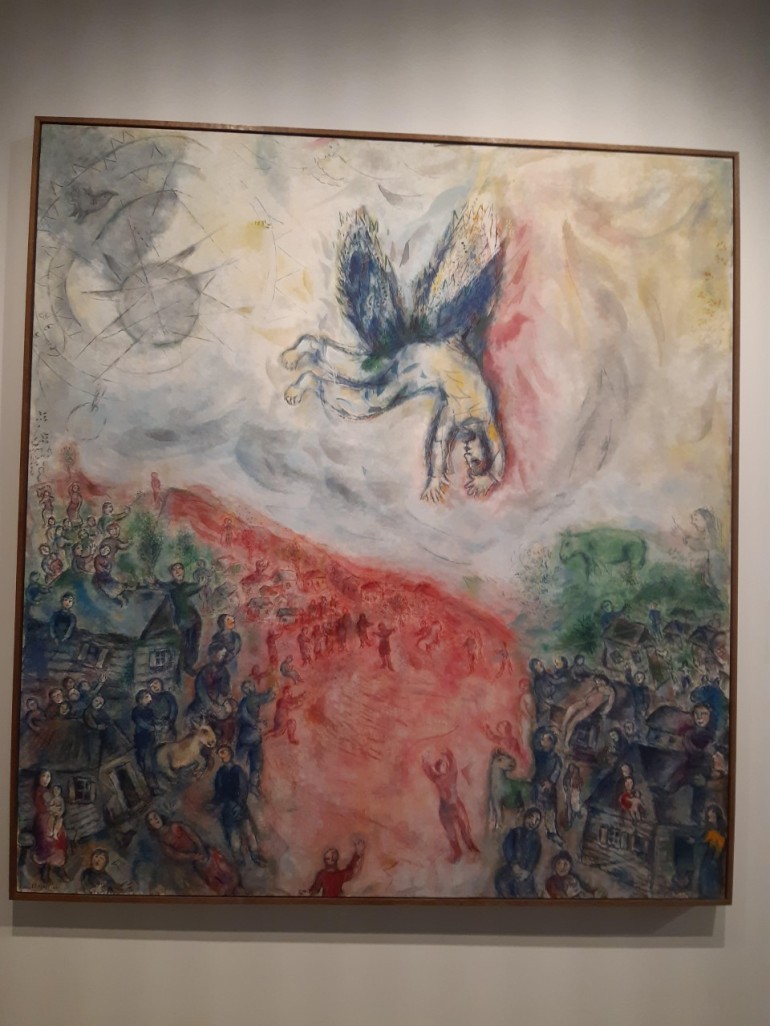
I was also excited to find a Marc Chagall. There is a great narrative to this painting, as the viewer you seem to be up in the sky with Icarus as he falls. The villagers below on the outer edges seem to not know yet what is happening and are carrying on with their everyday lives, whilst some have noticed and look skywards in wonder. In the centre of the village, they seem to be scorched and burning, as if Icarus is a meteorite striking the Earth and causing devastation. A bird flies up past the sun, as if mocking the failed Icarus. As Chagall’s style, the figures have that naive feeling to them. This painting is quite large, previous Chegall’s I have viewed have been quite small. I take from this that the idea of a good narrative creates a dramatic painting.
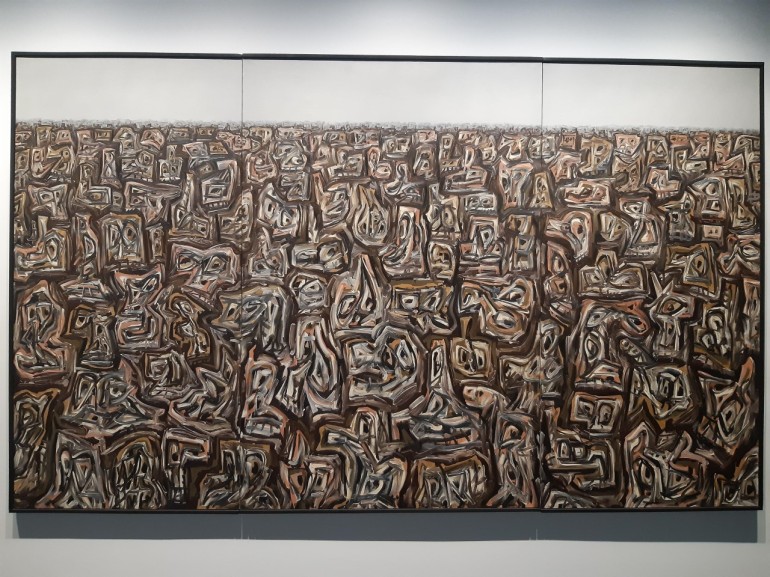
Oil on canvas 195 x 325cm 1978-79.
This striking work stopped me in my tracks. I am not familiar with the work of Antonio Saura, but I loved the pattern in this, that is abstract but also as you look it seems to be faces , eyes and teeth and mouths all crammed together, suffering and pain. This triptych was created as an ‘homage to the Catalan people’. Antonio Saura was politically opposed to the Franco dictatorship…(from the notes) . I like how Saura has achieved perspective to this; the ‘figures’ get smaller towards the ‘horizon’, which creates depth and distance, and leaving the top clear creates the feeling of sky. The longer you look and engage with this painting, the more the figures seem to have life. I think it is an impressive and thought provoking work.
The Pompidou, Malaga. or ‘The Cube’ as it is also called, is a lovely gallery to visit. There was so much more there but I have chosen the works that struck me the most this visit.
A quick homage to Doig’s reflection, acrylic on paper A3
